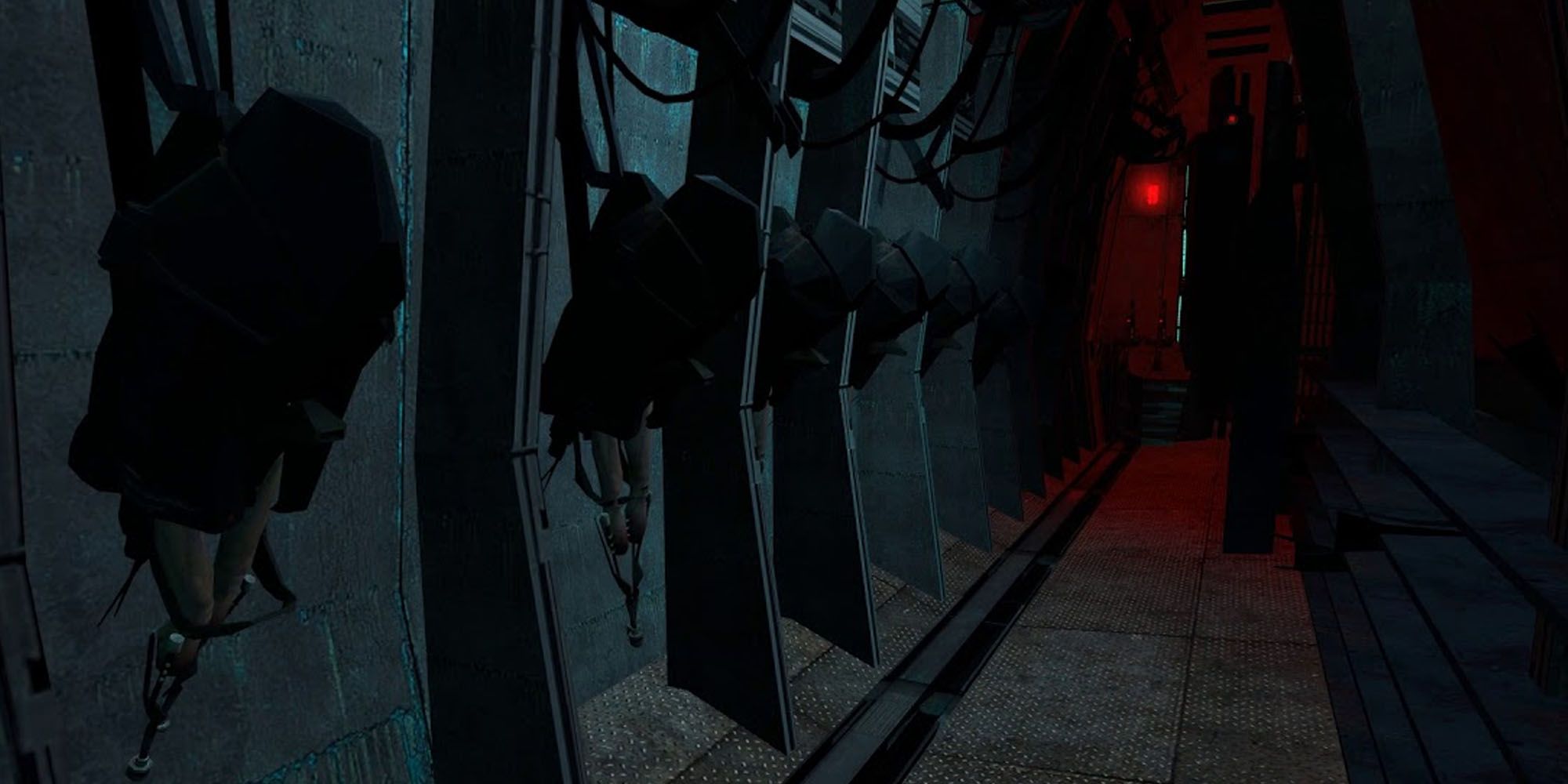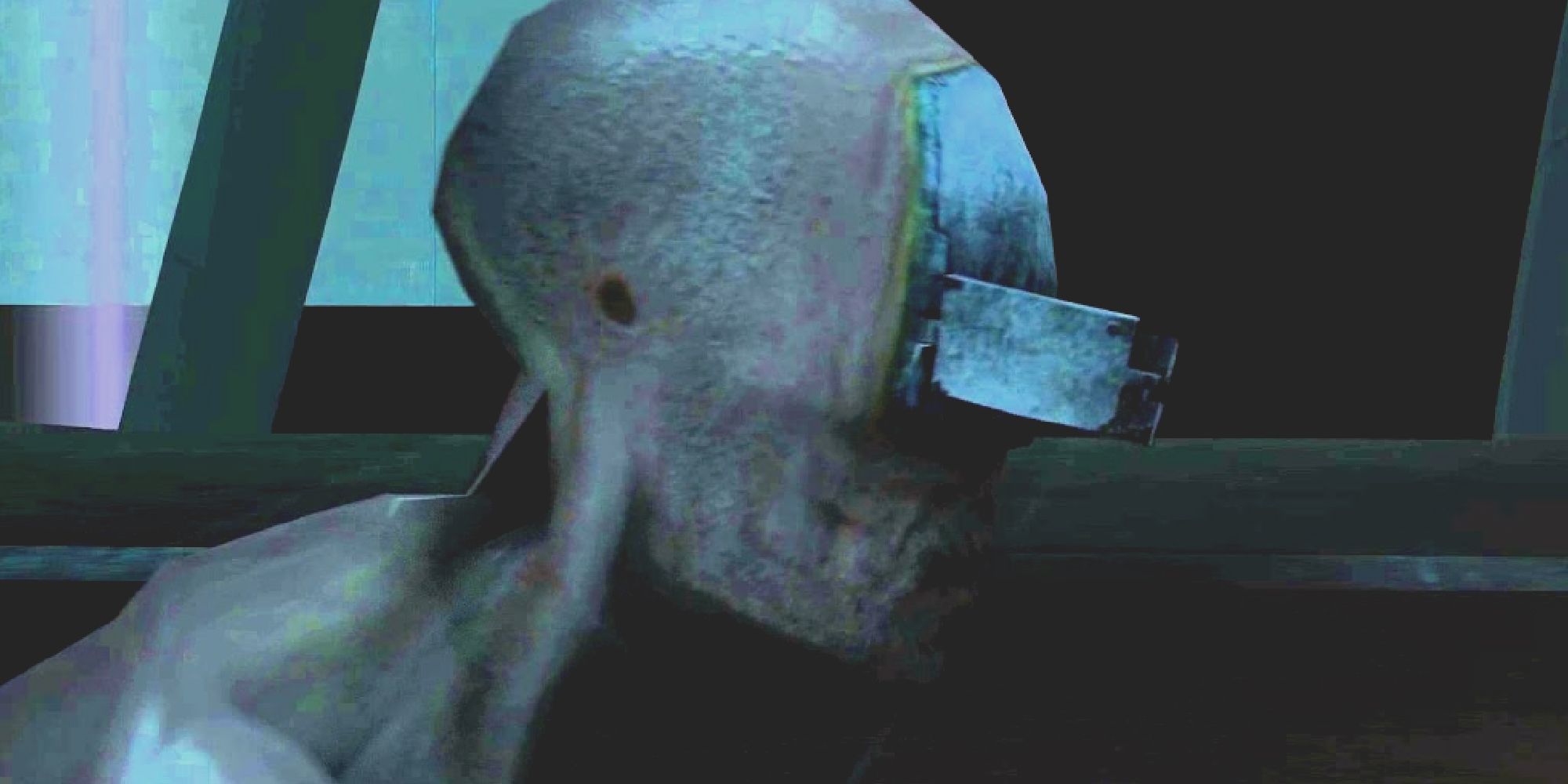Half-Life excels at shoving us into tight spaces and scaring the pants off us. It begins with dimly lit ruins of an underground facility that feels inescapable, pushing us deeper and deeper into the heart of an unstoppable siege, each corner hiding something more treacherous than the last.
Vortigaunts with their crunchy cackles make us jump as explosive bolts of lightning suddenly zap out of dark closets, survivors turn into meat puppets as pulsating headcrabs dig into their skulls, and employees are wrenched into vents by unseeable monsters we will soon have to face ourselves. It’s a strange, dystopian hellscape.
Horror only grew with the second game, but rather than a fort-under-siege-style story akin to a John Carpenter flick, we were welcomed into a dystopia that oozed 1984 iconography. The very first thing we see getting off the train is a scanner snapping photos, surveilling our every move without any hint of subtlety. The horror came from that unrelenting watchful eye, unconsenting, genetically modified soldiers forced to kill their own people, and neighbours turning on each other for scraps. Half-Life 2 stands tall as one of the best works of dystopian fiction in games, but Episode One reunites it with the original’s claustrophobic atmosphere.
Set against the backdrop of an interdimensional Citadel on the cusp of imploding and bringing an entire city down with it, we’re tasked with fleeing through the crumbling streets toward a train station where we can make our escape. But as so much has fallen into disrepair, the only way out is through still-standing buildings, merging Half-Life 2’s bleak totalitarian horror with the tighter setting of the first game. It begins with us venturing back into the Citadel so that we can buy a little more time. Here, we finally unpack the body horror of the Stalkers and come to terms with why Alyx was so terrified of her father becoming one.
They’re skeletal mutations, vaguely resembling humans, but homogeneous in appearance. Once rebels and citizens who dared speak up, they're now mindless copy-paste drones for the Combine. For the most part, our encounter with them is brief, as we watch them from afar or quickly dispatch them, but as we finally leave the Citadel to make our escape, we find ourselves in a crashing carriage full of them, gnawing at us like rabid animals. Their harrowing screeches take them from harmless but tragic enemies into living nightmares, highlighting just how cruel the Combine are. They can’t even voice their pain.
Once we get out of the carriage, the game will not let up as we step into a pitch-black parking garage leading into a rundown hospital. Half-Life has always played with its own version of Alien’s Facehuggers, the Headcrabs, but Episode One saw them coupling with Combine. Once the unstoppable Empire capable of bringing down Earth’s entire military force in a mere seven hours, their soldiers are now mindless husks. It’s a twist of irony that would be funny if it wasn’t for the distorted radio chatter and a vague semblance of consciousness still fighting to hold on as they grab grenades and kill themselves in what will likely be their only act of mercy. Perfect that it’s such a selfish one.
Episode One’s horror stands strong compared to the games that came before it because it takes the core ideas of Half-Life—helplessness, the loss of self, a dying world falling apart right in front of you—and stretches them to their limits. Headcrabs are usually little more than nuisances, especially compared to the hordes of organised Combine, but in Episode One, even the strongest military in the universe falls to them. And while City 17 appeared a hellish factory of misery in Half-Life 2, Episode One takes it further, asking us not only to contend with the Combine, but Antlions as the thumpers shut down, and those Headcrabs that have escaped their canisters. All while the Citadel, once a looming symbol of unbeatable power, distorts into a reminder that death is moments away.
Like Half-Life, Episode One is about the known crumbling before our eyes. Unlike Half-Life, we brought it down on purpose, seeking a victory against our oppressors, but the aftermath is only a further sign of how much they have ravaged the Earth. Without their technology, the new alien life plaguing the planet is as much a danger as they are, only painting a bleaker picture of what humanity has to contend with once it reclaims the planet as its own.



